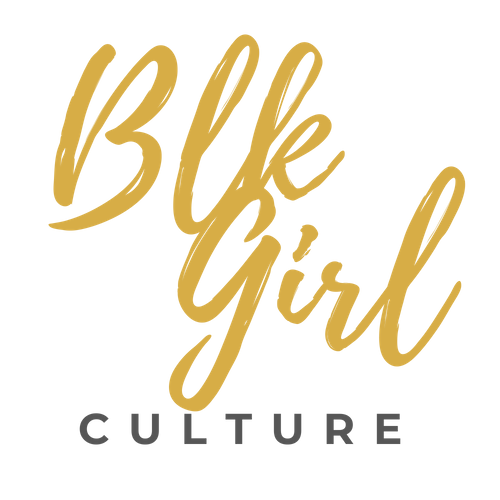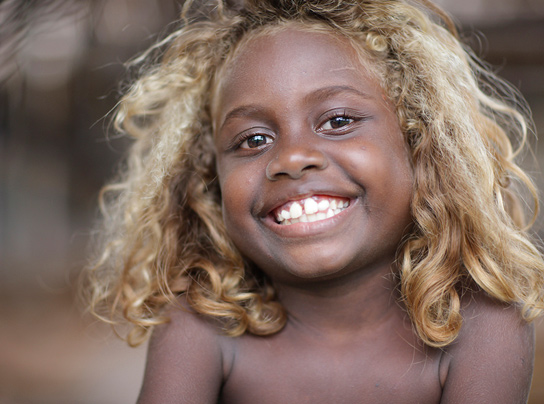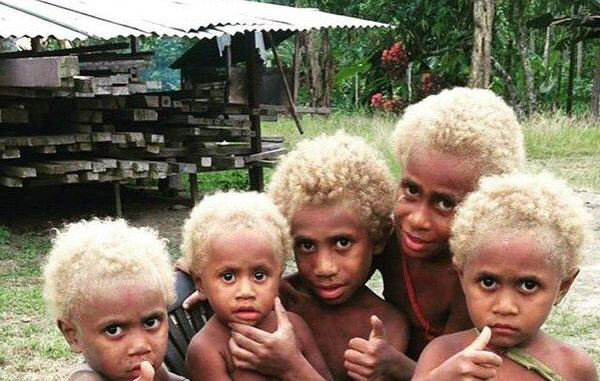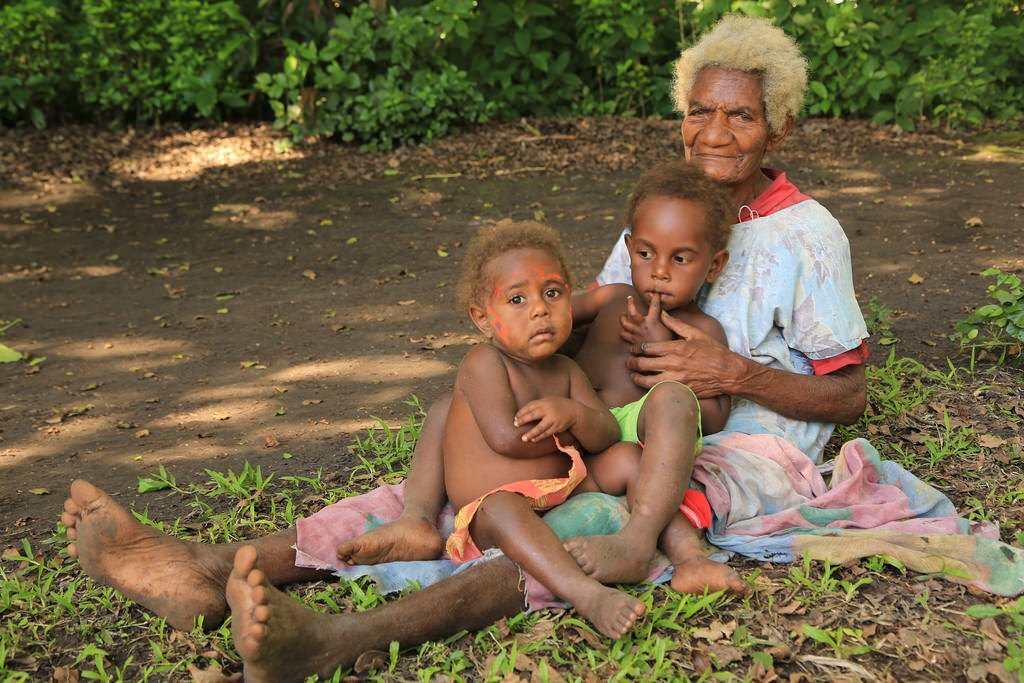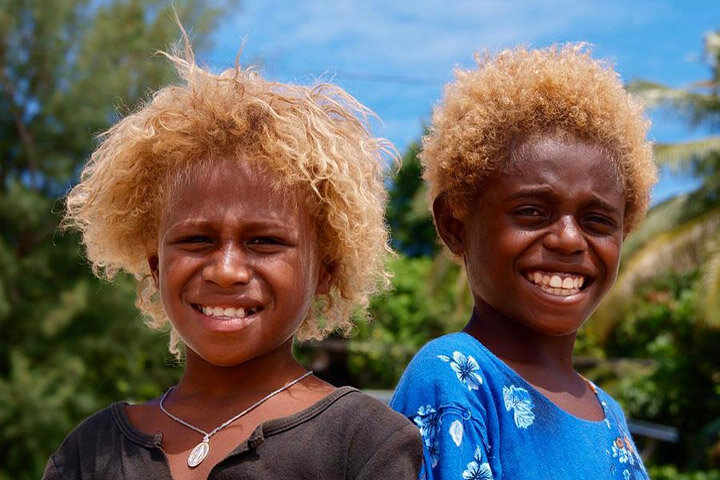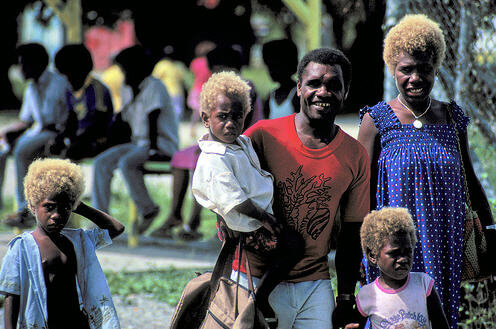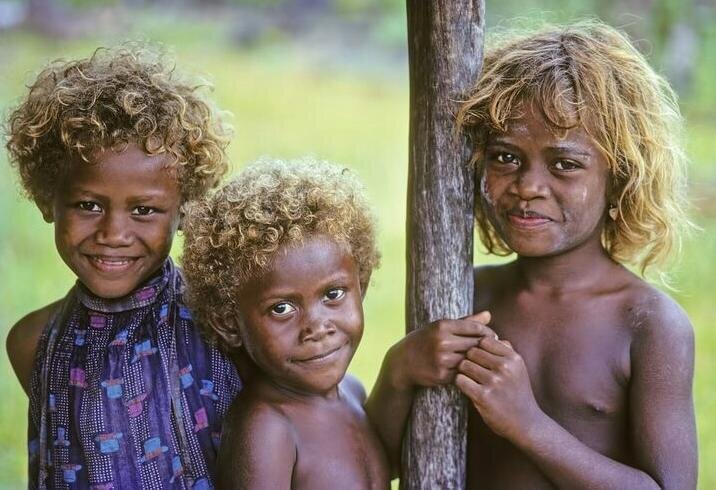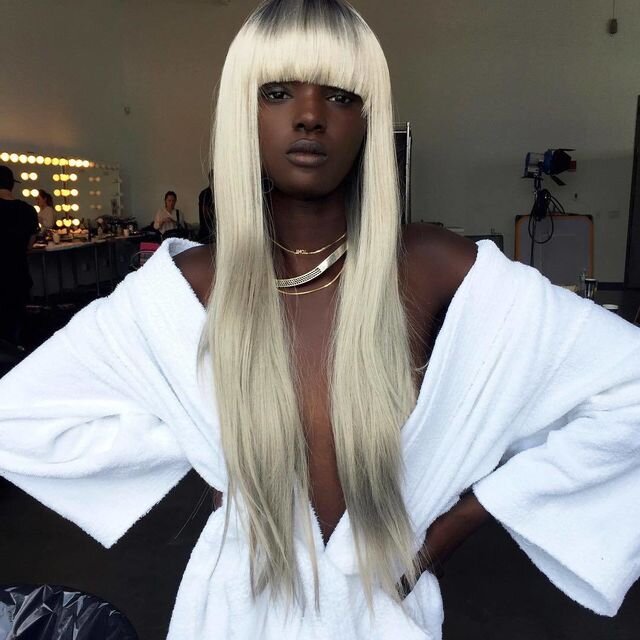Meet the Melanasians: Black People with Naturally Blonde Hair
“You’re too dark to wear blonde hair!”
If I had a penny for every time I heard that, I would be richer than Oprah. There is a long-standing stigma that Black people, especially dark-skinned black people, should not sport blonde hair. Justification? None. People usually say its “ratchet”, “ghetto”, “ or some other derogatory remark along the same lines. These statements don’t just come from outside of the Black community, but within the black community as well. But what about the Black people with naturally blonde hair? What about an entire ethnic group of them? Well, they exist, and they are called the Melanasians.
Living in the Pacific islands of Melanesia, this group of people quite literally defies all stereotypes against Black people with blonde hair. Situated just north-east of Australia, the Melanesian’s have dark skin, large features and originated from Africa. They are undeniably, black.
The term “Black”, according to the Oxford Dictionary is defined as:
Belonging to or denoting any human group having dark-coloured skin, especially of African or Australian Aboriginal ancestry.
That being said, the Melanasians are undoubtedly Black. But what truly sets them apart from the typical idea of “Black”, is their blonde hair.
Where does this blonde hair come from? Its simple: genetics. Blonde hair in general, is a rare gene found in humans. Only 2% of the world’s population is blonde. Many children are born blonde, but by age ten, their hair usually darkens significantly, due to increasing levels of eumelanin, a type of melanin that regulates hair and skin pigmentation. This is the reason why many black babies are born with fair skin, but gradually get darker as they grow in their early stages. The genetic mutation of blonde hair is an arginine-to-cysteine change at a highly conserved residue in tyrosinase-related protein 1 (TYRP1) as a major determinant of blond hair in Melanesian people. So basically its a tiny, one-letter gene change in their DNA. We have three billion letters in our DNA, and it takes a change of just one letter to turn a black person’s hair blonde. Amazing right?
Melanasians typically live in homesteads and hamlets, as opposed to villages. This is a typical practice of coastal settlements, especially in the Pacific. These groups tend to have under 1,000 people in their community, and typically live in very close proximity to each-other, in case of any attacks against them. Many groups also reside far from the coast, and on mountains, ridges, and peaks which is essential for vegetation, hunting and daily island lifestyle and again helps protect them from potential island attacks.
In Melanesian culture, women are highly valued and cherished. Women are the ones who ensure their groups survival and cultivation. They are the major producers of agriculture in their groups, are chief administrators in domestic politics, healing and ritual, and all this in addition to maternity. The idea of and the physical fluids and substances (semen, vaginal fluids, and menstrual blood), are valued as extremely powerful, therefore, potentially very dangerous as well. Rituals and ceremonies are held around these fluids, in a very non-sexualized way. There is also the existence of single-sex groups within the groups, where homosexuality and gender fluidity is practiced.
Rain-forests are one of the predominant landscapes in the Pacific Islands, and Melanasians make full use of all these rain forests have to offer. They use stone tools to cut down small areas of trees, for agricultural purposes. Their primary plants include yams, taro, plantains, sago (spices), leafy greens and sugarcane. They are also known for their heavy production of sweet potatoes, which is due to their inhabitance at high altitudes. In addition to agriculture, they also practice hunting and fishing.
The Melanesian coastal areas are rich in shells, salt, beads and stones, which are often used in trade with neighboring areas. They are make bags and nets from bush fibers, using them for fishing, hunting, trapping, foraging, and carrying. Bamboo, is another natural resource they use to make cooking vessels, water containers, torches, and carving knives. Canoes are commonly used among the Melanesian people, which are essential to their trade practices.
Ancestry is a central element of religion in Melanesia. Ancestral spirits participate in their everyday lives and rituals. They believe that the human life is unpredictable and at times harsh, and attribute much of their success to the assistance from their ancestors spirits, which are manipulated by magical formulas and elicited through prayer and sacrifice. Religion is an essential attribute to their everyday life, and many Melanasians, specifically the women, practice magic and daily rituals to help sustain their communities.
Melanesian art is another important factor in their culture. Many groups view the body as a canvas, and practice face and body painting, masks, wigs and headdresses, and elaborate costumes. Other popular forms of art include canoe prow boards dancing shields, and various different elaborate carvings, which all usually serve religious purposes. In religious ceremonies, physical art, accompanied by music and dancing, are often use to portray mythical creatures, ancestors and for sole entertainment. Melanesians also practice the telling of epic narrative, myth, folktale, and oratory, which are redolent with metaphor and mythic allusion.
So, next time you see a black person rocking blonde hair, compliment them!
Let them (and the ignorant black girl, blonde hair haters) know that our people come in so many different colors, shapes, and backgrounds, and kinky hair comes in all colors. We can rock blonde hair, no matter which shade of brown we are!
This article was inspired by my phenomenal Grandmother Charlotte Jackson. I love you! Thank you for sharing all your knowledge and wisdom with me.
